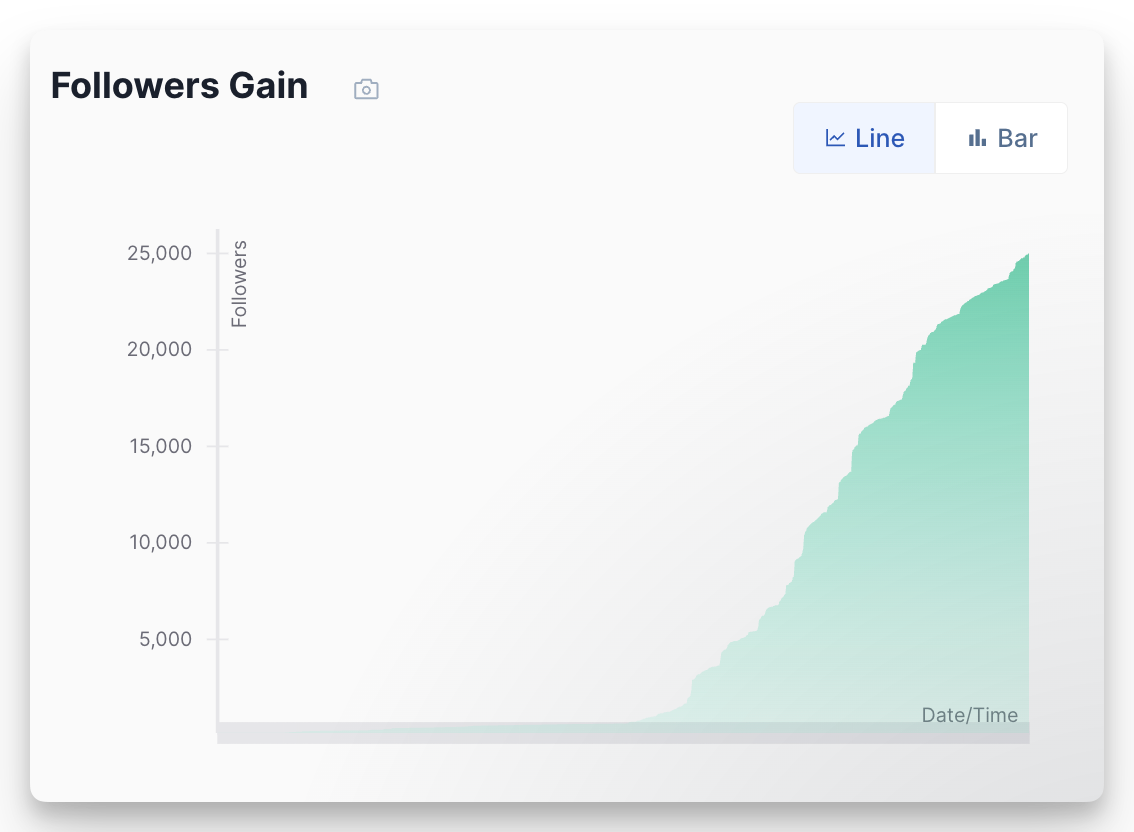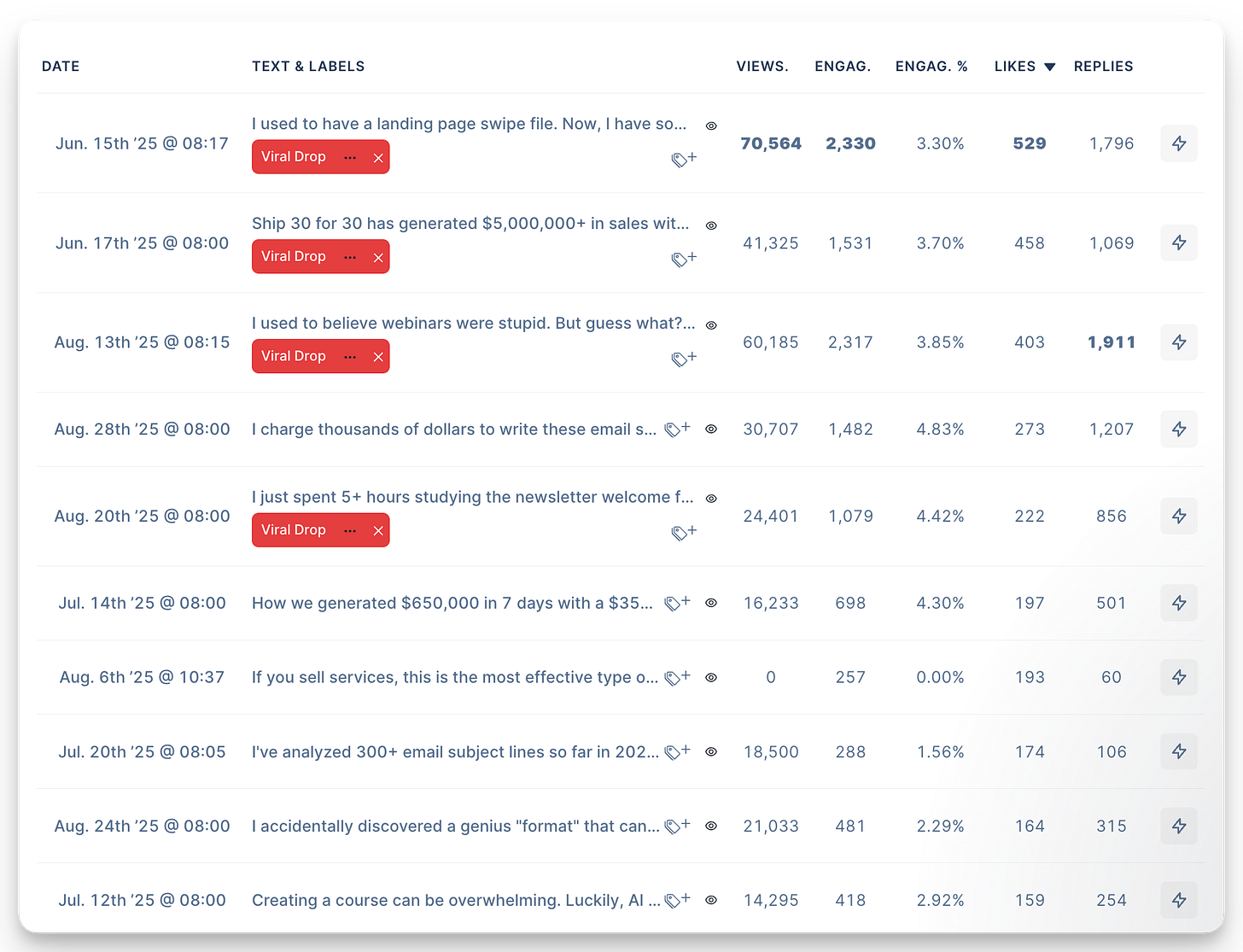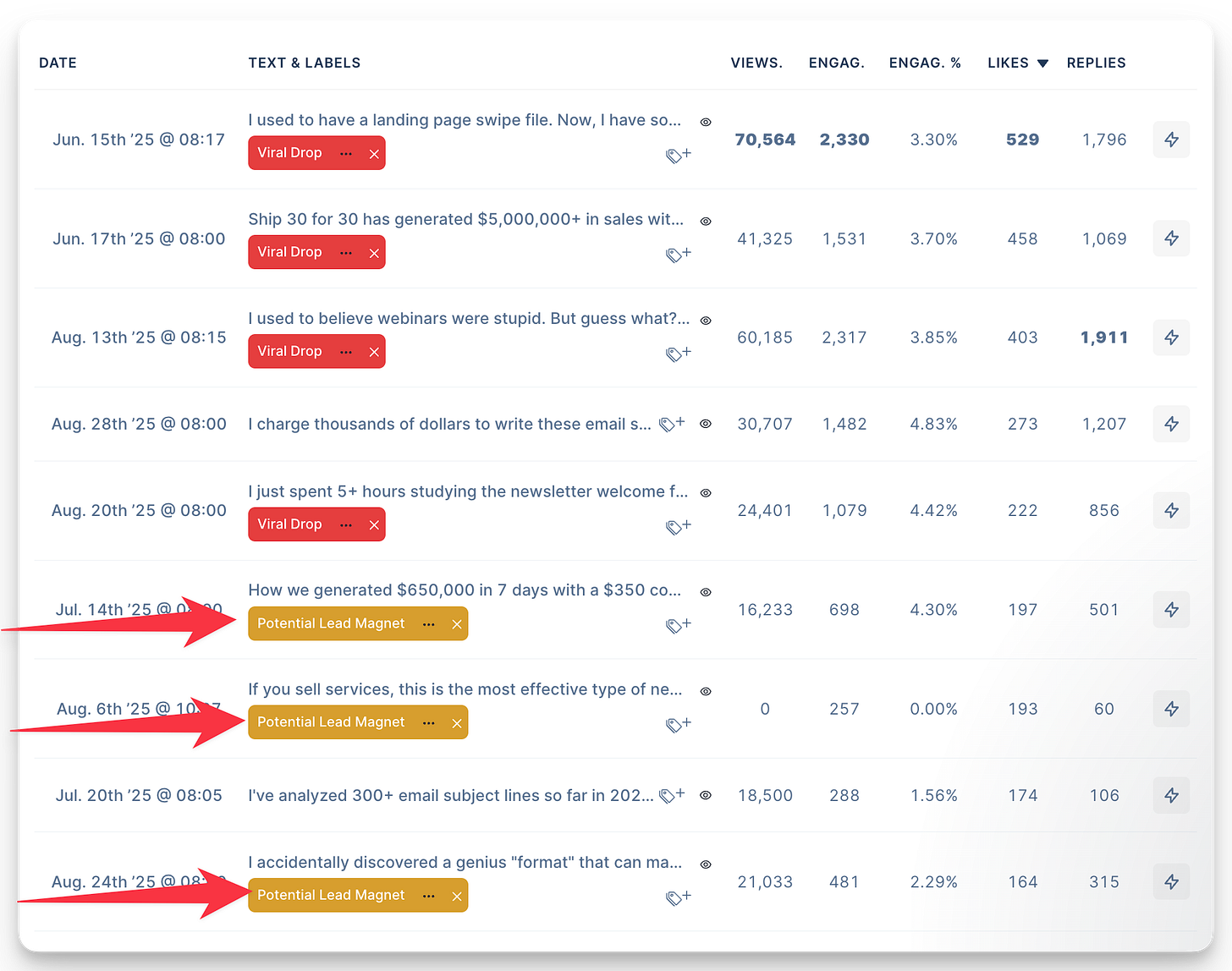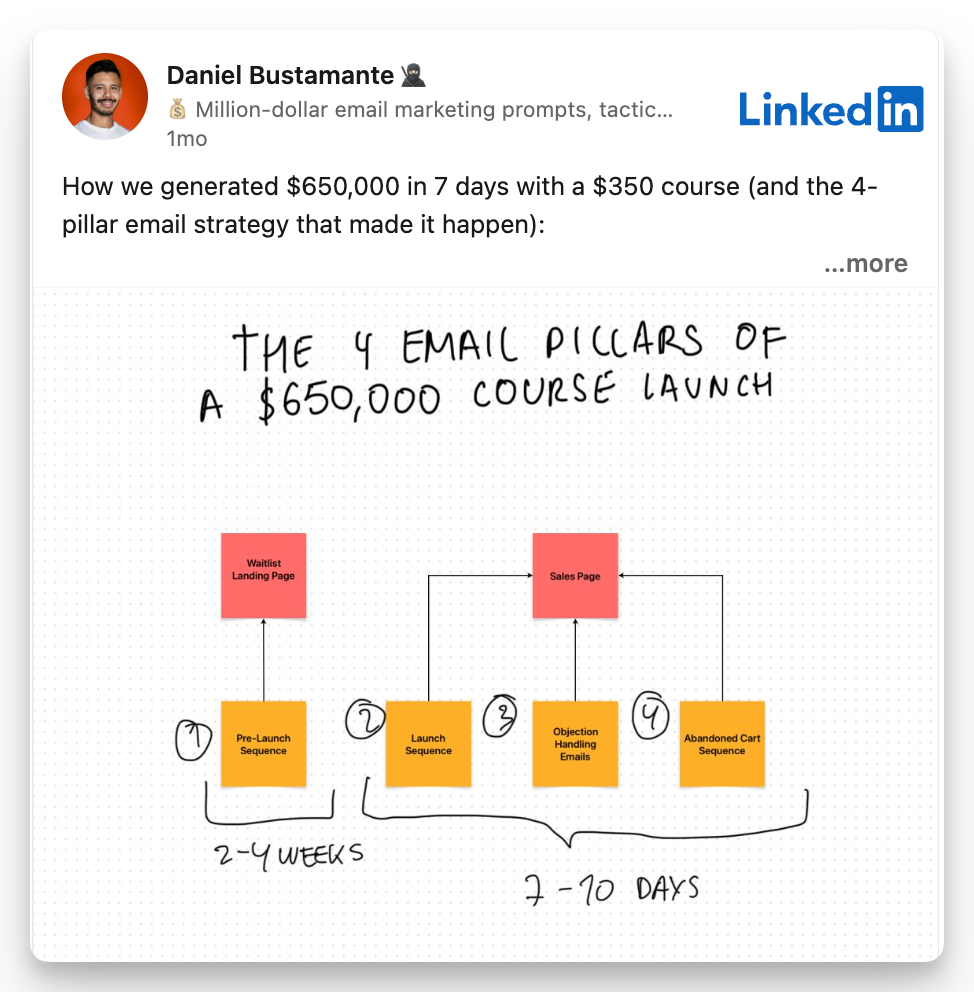How to find "pre-validated" lead magnet ideas
Your readers already told you what they want
In the past year, I've built and launched 30+ lead magnets.
In the process, I have:
Accumulated millions of impressions
Gotten tens of thousands of new LinkedIn followers
And generated 9,000+ newsletter subscribers
But as much as I would love to say that all my lead magnets have always crushed it, nothing could be further from the truth.
In reality, many of my lead magnets have flopped or just done OK.
But there's a handful of them that have driven outlier results and made up for all the "failures."
(I guess Pareto was right!)
Now, even though you can't completely predict which lead magnets will crush and which ones won't, you can remove some of the guessing by using data.
Because here's the thing most people don't realize:
If you're posting content on LinkedIn somewhat consistently, you're probably sitting on a handful of "pre-validated lead magnets” already!
Every time you make a new post, you're essentially doing free market research & validating the topics, problems, and frameworks your audience is most interested in.
And you can use these insights to remove some of the guesswork when it comes to creating more in-depth resources (think: lead magnets).
All you have to do is look at the data and double down on what's working!
That said, there's definitely some nuances to it.
So let me walk you through my process:
My 3-Part Process To Find Pre-Validated Lead Magnet Ideas
This is the exact step-by-step process I use to find pre-validated lead magnet ideas in my LinkedIn analytics:
Step 1: Find your top performing LinkedIn posts
LinkedIn's native analytics dashboard isn't great - especially at the "post level."
So to streamline this part of the process I use a tool called Taplio.
Taplio allows you to see all your posts from the last 30, 60, 90 days (any timeframe you'd like to look at, really) and then sort your posts by number of views, likes, or comments.
Which is super helpful when you want to be able to just focus on your top performing posts.
For example, these are my best 10 posts from the last 90 days (if I sort by “likes”):
Note: The posts that have the “viral drop” tag are “lead magnet giveaway posts.” I like to tag them so I can easily exclude them or skip them when I’m trying to brainstorm net new lead magnet ideas.
Step 2: Spot the ones with lead magnet potential
Once you have visibility over your top performers, the next step is to identify the ones that have lead magnet potential.
Because here's the thing:
Just because a post got a lot of engagement doesn't necessarily mean it is "lead magnet material."
Generally, when I'm looking for lead magnet ideas, I aim to find posts that performed well but also:
Are very tactical or actionable
And fall into one of my main content buckets
Why?
Simple!
First, if someone is going to give me their email address (in exchange for a resource), I want them to get as much value as possible from the asset.
And in my opinion, value = usefulness. So if the original post already leaned actionable, then it's going to be easier for me to make the lead magnet valuable.
Second, even though I might sometimes post about other things, there's just a handful of "pillar" topics I want to be known for: email marketing, newsletter growth & monetization, and funnel building.
So, for example, if I have a more broad post about content creation go viral, I will probably not want to turn it into a lead magnet - even if it performed extremely well. Simply because I don't want to be known for "content creation."
So with this criteria in mind, here’s a few top performing posts that have a lot of lead magnet potential:
Each of these posts meet the 3 criteria I outlined above:
They’re valuable (think: useful)
They fall into 1 (or more) of my main content buckets
And they got a lot of engagement (at least for my standards)
Step 3: Brainstorm ways you could expand them into lead magnets
Now for the last step:
Thinking about ways you could expand the posts you selected into lead magnets.
My rule of thumb here is:
I don't like to expand things just for the sake of it.
(Remember: Value = usefulness!)
So when I'm thinking about expanding something, the real question I'm asking myself is:
“How can I make this more useful? Or how can I make it easier for the reader to implement this tactic/strategy/framework and to get them some sort of result?”
And if you think about it from a first principles perspective, there's really just a handful of things you can do to accomplish that.
You can give people:
More examples
More detailed/nuanced explanations
More templates, prompts, and checklists
So for example, let’s say I want to build a lead magnet off of the first post I selected earlier:
To expand it, I could:
Be more specific about the “themes” and angles we used for these sequences
Share real examples of some the emails we sent as part of each sequence
Share a framework & a checklist to help readers plan their next launch
Etc. etc. etc.
Hopefully you can see how each of these “additions” would 100% make this asset more useful.
That’s the goal!
Now, even though this exercise is extremely helpful, it can also be a little bit time-consuming.
So I built a little something to help you streamline this whole process…
This Week's AI Prompt: How To Use AI To Analyze Your LinkedIn Analytics & Brainstorm Pre-Validated Lead Magnet Ideas
This prompt automates the entire process I just walked you through.
All you gotta do?
Export your LinkedIn analytics as CSV file
Crack open your favorite AI tool (I like to use Claude)
Feed your LLM this prompt along with the CSV file of your LinkedIn stats







